Ah, the '70s. Such a glorious decade of bell-bottomed pants and shag carpet. I fondly remember sitting down with my dad, a freshly cracked Coors in his hand, and watching the premiere episode of Battlestar Galactica. We even grooved to the disco version of the soundtrack on 8-track in our wood-paneled station wagon.
I'm kidding.
I don't remember the '70s at all. More importantly, I don't nostalgically fetishize them like so many creations do, including the recent comedy Space Station '77 and the Double Fine/Adult Swim Games' Headlander. In fact, when I hear of something new borrowing from that particular something old, I tend to cringe. While I appreciate that modern artistic efforts can do really interesting things in the retro space, I've encountered few I've truly enjoyed.
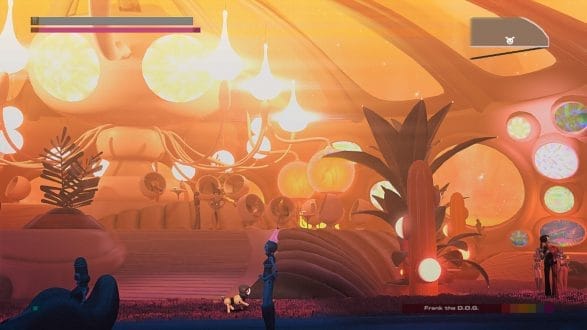
That said, when I first fired up Headlander, I was delighted at the visual design. Even with my misgivings over '70s retro, Headlander did a great job of capturing the era's take on "futuristic" designs and technology. From the lollipop reds and Tang oranges to the globular viewscreens to everything being recorded on tape, Headlander successfully drew me into its world.
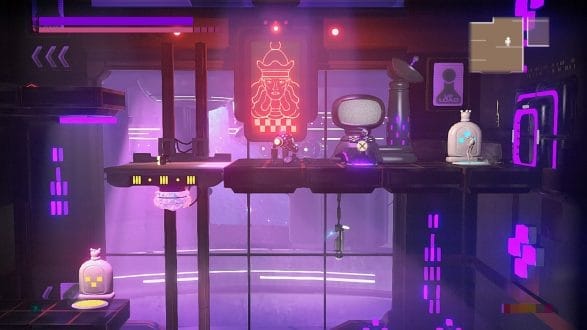
An even more pleasant surprise was Headlander's sound design. I'm not a fan of disco, the '70s' most iconic aural-spawn. Therefore, I greatly feared Headlander would blast me with it non-stop. Instead, what I found was a melodic, often rocking soundtrack that always put me in a good mood. Even the boss-level tracks, generally designed to instill fear, had me bobbing my head.
Headlander's praise pretty much ends there. Let me be clear, given my reaction to the visuals and music, I wanted to like this game. I wanted to love this game. But, sadly, once I got used to the gimmick of the visuals and sound, it was a brief, steep drop into the laser-turret guarded shaft of disappointment.
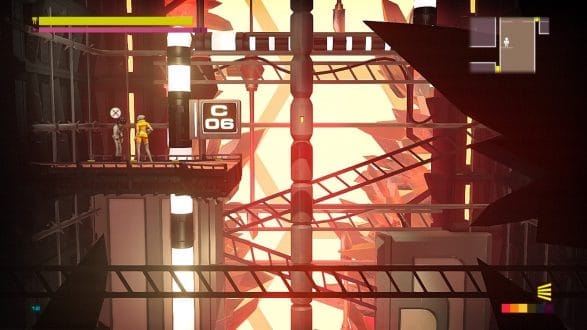
Let's start with Headlander's foundational mechanic. From the opening screen to the end, your avatar is a predominantly disembodied head. Nearly everything you do follows this physical fact. Being body-free is one of those ideas that I'm positive sounded amazing in the Double Fine board rooms. "Wouldn't it be cool if all you did, like ALL YOU DID, was just as a head?!"
Some ideas are best left as board room wastebasket fodder.
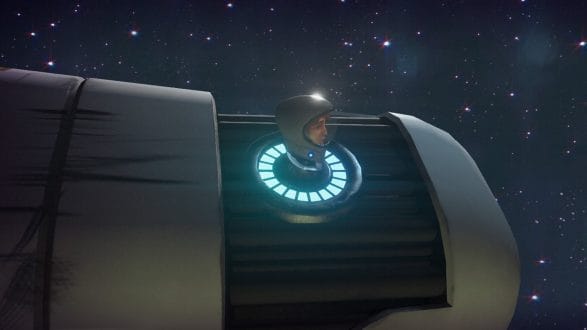
From the first room on, Headlander's "detaching your head from one body and attaching it to another" mechanic was infuriating. Absolutely infuriating. Yes, I got used to it somewhat, but the fact was that every basic function necessary to the game, from opening doors to reading data tapes, usually required a series of head attachments and detachments. Each of these maneuvers required some aiming precision. In some cases, this action only meant a few more seconds of time spent on executing the maneuver. In other instances, though, imprecise aiming meant death.
Let's talk about how Headlander handles death. Double Fine could've just left Headlander a puzzle-platformer, including all the trimmings thereof, and just left it at that. You jump too short, you fall into the pit. Done and done. Instead, Headlander also has RPG leveling elements, some of which help you with traditional platforming challenges. In some cases, such as the ability to increase helmet thrust, these elements were quite welcome. In most, though, I noticed minimal or even no change in gameplay. In fact, at one point, I had 16 points stashed away (the average upgrade costing one) with no real direction or desire for them.
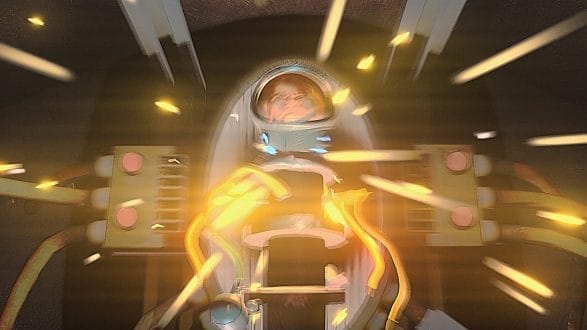
One ability I did find helpful was that of the helmet's upgradeable thrust. Using it, I could fly fast enough to break through barriers previously inaccessible. Such barriers were in the way of some upgrades. Another upgrade was a shield generator which protected the helmet from laser beams that would otherwise mean instadeath. I admit both of these were useful, and both continued the Metroidvania tradition of seeing an area you can't access only to access it later on in the game.
Talk of Metroidvania leads me to talk of Headlander's Metroidvania-ness. The central mechanic in Headlander for keeping doors closed was the story's conceit of a color-coded security system. Only red-uniformed people were allowed through red doors, only orange ones through orange doors, etc. While I appreciated the basic nature of such a system, I found it ultimately contrived in the story sense and frustrating in the practical sense. Countless rooms had, for example, a green entrance and a blue exit. I'd be able to get in, but have to track down a blue body to be able to exit that room. Such need for body-swapping led to countless backtracking and second-guessing. Most of the swapped colors also made no in-story sense. They seemed to exist just to add challenge (aka frustration) to Headlander.
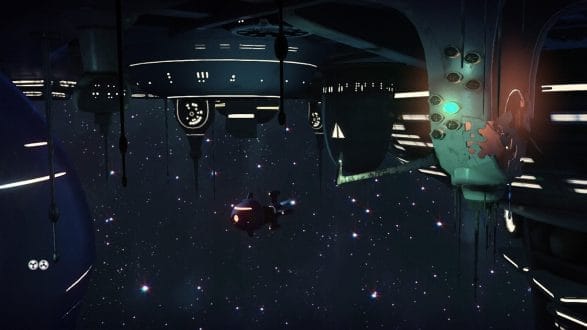
Finally, to the story. I have to admit Headlander's tale was actually pretty good, if not groundbreaking. It even had a twist or two I didn't see coming. But as I say to friends and enemies about films, if I don't enjoy the film in its entirety, or worse, if I feel frustrated and bored with a film's story in its other aspects, no amount of twists are going to save it. The same proves true for Headlander. More than once, the story took a turn and all I could think was, "Oh, that's neat. Now can we please get on with it?"
Not only that, but I found much of the writing double-edged. The super robot Methuselah's lines were interesting and foreboding. The AI doors, however, were not. The very first time I opened a door, it told me it was advanced AI so could think about a lot more things than opening doors. It rang of Marvin the Paranoid Android from Douglas Adams' Hitchhiker's Guide to the Galaxy. Unlike Marvin, though, the doors become obnoxious. Every single time I passed through one, it would toss a bitter quip. Most times, it was the same one. The first three times, it was a cute quirk. The next thousand, it was beyond irritating. So much so, that I wish Headlander had included among my upgrades the ability to shut the doors up.
Though Headlander has an enticing setting and inspired visuals, and though its story is interesting, the basic controls and Metroidvania pitfalls hinder it from being a great game. If campy, '70s-inspired sci-fi Metroidvania body-switching sims are your thing, then give it a go. Otherwise, just replay Super Metroid.
Headlander was reviewed on PlayStation 4 with a copy provided by the publisher. It is also available on PC via Steam.
Review Summary
Sharp visuals and story don't save a would-be strong Metroidvania platformer from endless pitfalls.
(Review Policy)Have a tip, or want to point out something we missed? Leave a Comment or e-mail us at tips@techraptor.net












